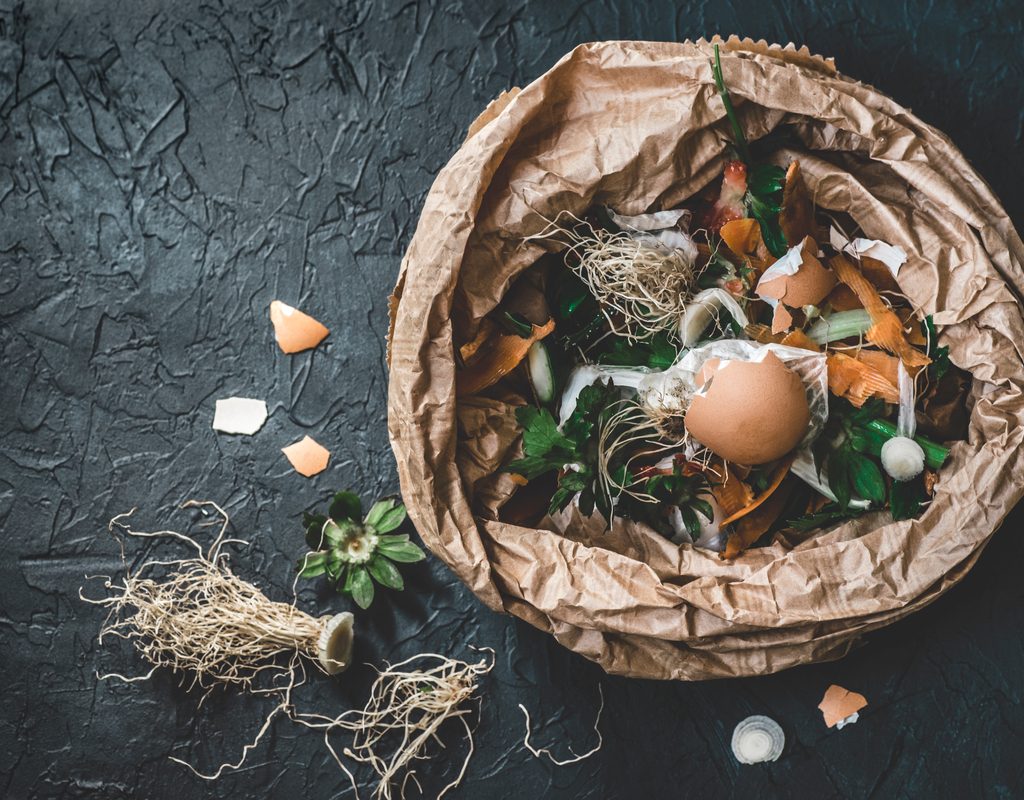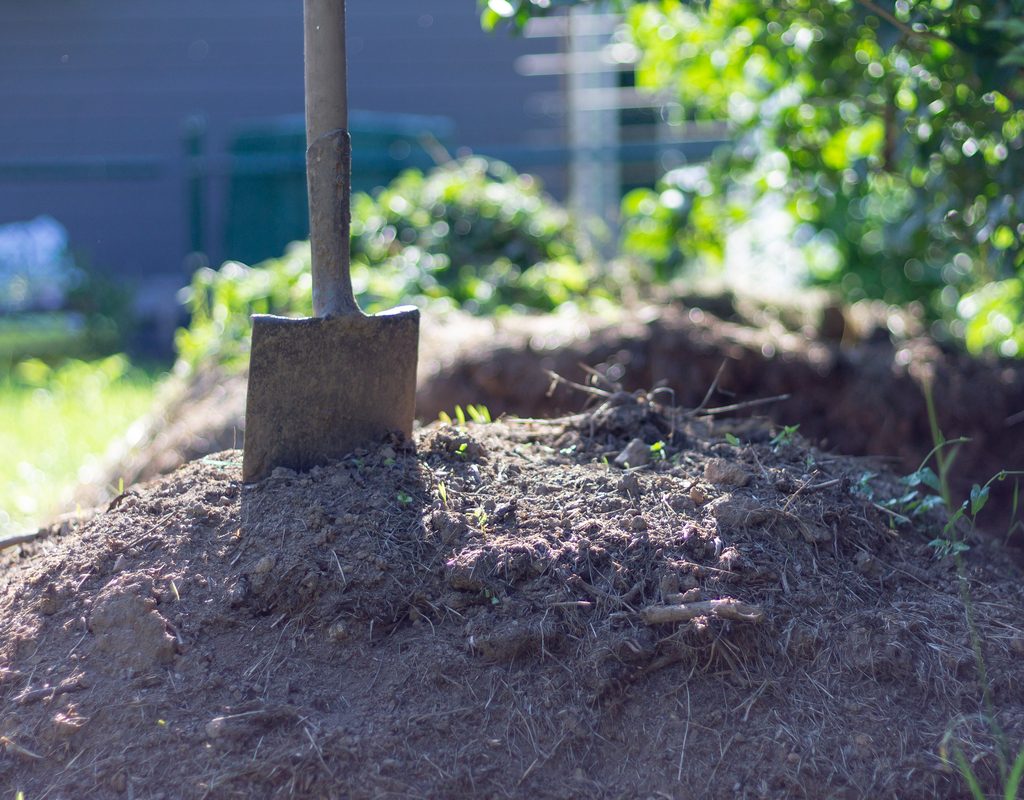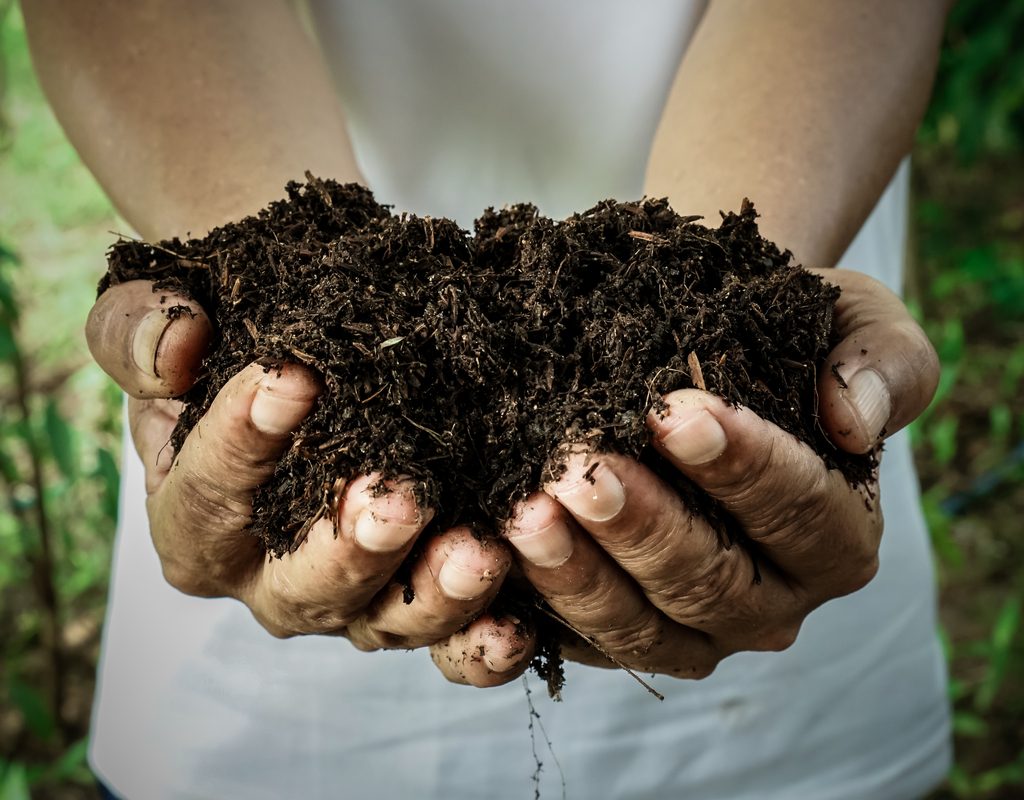Compost is an excellent soil amendment for all kinds of gardens. Making it at home helps to keep food waste and landscape debris out of the landfill. One major question that lots of gardeners share is, “Does compost smell?” To be honest, yes, compost always smells. But it should never stink. Compost should smell pleasantly earthy, and maybe a little sweet. Ensure that your compost always smells fresh by following these few simple guidelines. If your compost begins to smell like ammonia, sulfur, or a broken septic tank, you’ve made a mistake that millions of other gardeners have made before — but it’s easy to fix.

Avoid these smelly items
Anything that was once living can technically be made into compost. However, meat, bones, dairy, and oils present a different set of challenges. These items spoil quickly and decompose slowly, guaranteeing a smelly problem. Plus they attract animals that will make a mess of your yard and compost bin as they investigate the smell. Leave these items out of your homemade compost mix.
If it smells like ammonia
An ammonia smell is an indication that there is too much nitrogen and not enough carbon in the mix. To fix the odor, add material that is high in carbon, like shredded paper or wood chips. One way to avoid this problem is by adding a layer of high-carbon material after each addition of kitchen scraps.
The bacteria that convert plant waste into soil consume carbon and nitrogen in a 30:1 ratio. Since everything that goes into the pile is made of these elements in varying amounts, it helps to think of compost ingredients as high-nitrogen “greens” and high-carbon “browns.” Greens include things like vegetable scraps, weeds, grass clippings, and coffee grounds (not green in color, but still high-nitrogen). Brown ingredients are things like autumn leaves, wood chips, shredded paper (including coffee filters and paper towels), and shredded non-glossy cardboard. Aim for a 3:1 ratio of greens to browns in your compost system to maintain a healthy balance.

If it smells sour, rotten, or septic
A putrid rotten smell is a common symptom of anaerobic decay. The pile is likely too wet or possibly compacted. Add dry browns to absorb excess moisture, and turn the pile to infuse more air. One way to prevent this problem is by turning the compost regularly.
Compost microbes are aerobic organisms. They need oxygen. Too much moisture or compacted particles force the air out of the mix, causing these aerobic bacteria to die off and allowing anaerobic organisms to colonize. Compost needs water to work, but avoid the temptation to overwater the pile. Give it just enough moisture to maintain the feel of a wet-but-wrung-out sponge. If you are tending a compost pile, cover it with a tarp to keep excess rain off.
Keep your compost smelling great
The best way to avoid bad smells and create high quality compost is to think of the compost bin not as a trash heap but as a habitat for millions of microscopic helpers. These beneficial microbes need adequate supplies of oxygen, water, carbon, and nitrogen.
Start every batch with a layer of moistened, carbon-rich “browns.” Add a layer of nitrogen-rich “greens,” and cover with another layer of brown material. As you add new material, always cover greens with a layer of browns.
Small particles offer lots of surface area for the bacteria to colonize, which helps the pile break down faster. Chop or shred compost ingredients as needed before adding them to the mix to keep all particles smaller than two inches.
Compost should always feel quite moist but never soggy. Green materials tend to be inherently moist and should not need added moisture. Browns are often quite dry and can help to dry out soggy compost. Moisten browns if necessary, before or after adding them to the mix, to ensure an adequate moisture balance.
Turn the pile or tumbler weekly to ensure adequate oxygen penetration throughout the mix. Work the material from the outside of the pile toward the inside of the pile to promote uniform processing. Turning the pile regularly, while maintaining a healthy carbon to nitrogen ratio and moisture content, causes it to generate heat. Temperatures above 120° F. kill plant diseases and weed seeds, improving the quality of the finished compost.

Your nose knows
By following these simple, rules it’s usually pretty easy to avoid stinky compost. But sometimes things happen and a foul aroma arises, even with the best laid plans. Don’t worry, you can make corrections. If you smell something bad in the backyard bin, just make a few adjustments, turn the pile, and you’ll have it back on course in no time.


